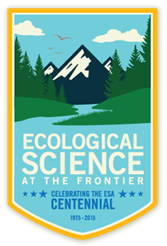 At the moment, 2 GhenToxLab members are joining the 100th ESA conference in Baltimore, USA (August 9-11). With over 250 contributed talks and poster sessions, this is the biggest ecological conference worldwide. Today, filling the gap between ecology and toxicology is one of the main research themes in our lab. As such, Jonathan De Raedt and Jan Baert present their poster “The effect of dispersal along a stress gradient in micro-algae communities”.
At the moment, 2 GhenToxLab members are joining the 100th ESA conference in Baltimore, USA (August 9-11). With over 250 contributed talks and poster sessions, this is the biggest ecological conference worldwide. Today, filling the gap between ecology and toxicology is one of the main research themes in our lab. As such, Jonathan De Raedt and Jan Baert present their poster “The effect of dispersal along a stress gradient in micro-algae communities”.
News
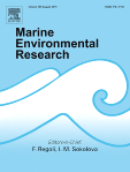 For the Marine Environmental Research Special Issue on “Particles in Oceans”, we contributed with a comprehensive review on microplastics in sediments. For this review we analysed literature dating back to the 1970s, in order to gain insights in the worldwide occurrence of microplastics in sediments, processes that drive their distribution and effects of this type of pollution on sediment associated organisms. Based on this extensive literature review (over 120 publications), we were able to identify several shortcomings in microplastics research and formulate recommendations to deal with these issues in the future. Although important advances have been made in the past decade, we describe the need for standardisation and harmonisation of sampling and extraction techniques, and the need for more realistic effect assessments for microplastics.
For the Marine Environmental Research Special Issue on “Particles in Oceans”, we contributed with a comprehensive review on microplastics in sediments. For this review we analysed literature dating back to the 1970s, in order to gain insights in the worldwide occurrence of microplastics in sediments, processes that drive their distribution and effects of this type of pollution on sediment associated organisms. Based on this extensive literature review (over 120 publications), we were able to identify several shortcomings in microplastics research and formulate recommendations to deal with these issues in the future. Although important advances have been made in the past decade, we describe the need for standardisation and harmonisation of sampling and extraction techniques, and the need for more realistic effect assessments for microplastics.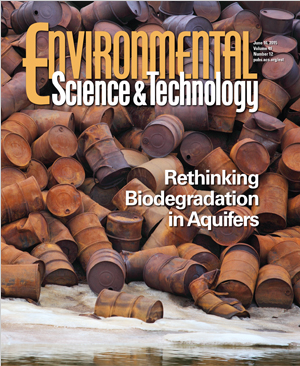 There is growing evidence that pollution has consequences that can extend beyond exposed generations and may involve trans-generational responses as well as rapid micro-evolutionary processes. A recent testimony of microevolution in fish of the Elizabeth River in Virginia, a water body so polluted that it has been termed a "toxic hot spot", reported costs of adaptation to this polluted environment. These fish displayed lower survival in clean water and appeared more sensitive to additional stressors. Most ecotoxicological test guidelines are only considering effects within one generation, thus potential detrimental effects across generations are under-evaluated. Here we conducted a natural selection experiment over several generations with a natural Daphnia magna population.
There is growing evidence that pollution has consequences that can extend beyond exposed generations and may involve trans-generational responses as well as rapid micro-evolutionary processes. A recent testimony of microevolution in fish of the Elizabeth River in Virginia, a water body so polluted that it has been termed a "toxic hot spot", reported costs of adaptation to this polluted environment. These fish displayed lower survival in clean water and appeared more sensitive to additional stressors. Most ecotoxicological test guidelines are only considering effects within one generation, thus potential detrimental effects across generations are under-evaluated. Here we conducted a natural selection experiment over several generations with a natural Daphnia magna population.
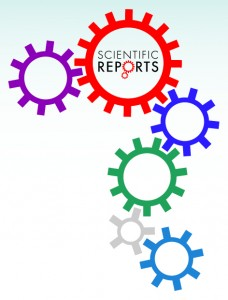 Over the past years, GhEnToxLab has developed an active and fascinating collaboration with the UGhent’s X-ray Microspectroscopy and Imaging Group (XMI). This lab, led by Prof. dr. Laszlo Vincze, is specialized in the development of synchotron radiation-based tools for micro X-ray imaging, absorption spectroscopy and fluorescence analysis. Among other techniques, they are currently developing a method that uses lasers to trap and manipulate single celled organisms in their native environment. The optically trapped organism can then be subjected to micro X-ray fluorescence imaging, providing us with a radically new tool to map the subcellular elemental composition of these cells.
Over the past years, GhEnToxLab has developed an active and fascinating collaboration with the UGhent’s X-ray Microspectroscopy and Imaging Group (XMI). This lab, led by Prof. dr. Laszlo Vincze, is specialized in the development of synchotron radiation-based tools for micro X-ray imaging, absorption spectroscopy and fluorescence analysis. Among other techniques, they are currently developing a method that uses lasers to trap and manipulate single celled organisms in their native environment. The optically trapped organism can then be subjected to micro X-ray fluorescence imaging, providing us with a radically new tool to map the subcellular elemental composition of these cells.
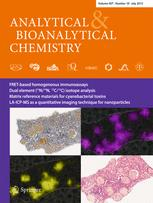 Through global shipping and trade, mankind has inadvertently spread marine organisms to such an extent that many are now considered cosmopolitan. Further aggravated by changes in the foodweb structure (overfishing), eutrophication and climate change, this has led to a substantial increase in the occurrence of harmful algal blooms (HABs). Next to the large potential for environmental damage, these recurring events have become a global public health concern as many species produce potent marine toxins that may lead to shellfish poisoning. To ensure food safety, the mouse bioassay has long been used to screen seafood for the presence of these toxins. Due to ethical concerns, however, this test is now being replaced by alternative chemical analyses.
Through global shipping and trade, mankind has inadvertently spread marine organisms to such an extent that many are now considered cosmopolitan. Further aggravated by changes in the foodweb structure (overfishing), eutrophication and climate change, this has led to a substantial increase in the occurrence of harmful algal blooms (HABs). Next to the large potential for environmental damage, these recurring events have become a global public health concern as many species produce potent marine toxins that may lead to shellfish poisoning. To ensure food safety, the mouse bioassay has long been used to screen seafood for the presence of these toxins. Due to ethical concerns, however, this test is now being replaced by alternative chemical analyses.
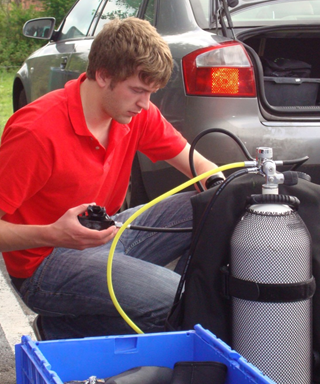 Since 2009, the Belgian Science Policy Office (BELSPO) has coordinated and facilitated the scientific diving activities of Belgian scientists. Every year, a BELSPO working group organizes a ten-day course to train and prepare Belgian marine scientists. GhEnToxLab member, Maarten De Rijcke, has been selected as one out of only eight divers to be trained as a Belgian Scientific Diver this year. Congrats Maarten, enjoy and keep it safe!
Since 2009, the Belgian Science Policy Office (BELSPO) has coordinated and facilitated the scientific diving activities of Belgian scientists. Every year, a BELSPO working group organizes a ten-day course to train and prepare Belgian marine scientists. GhEnToxLab member, Maarten De Rijcke, has been selected as one out of only eight divers to be trained as a Belgian Scientific Diver this year. Congrats Maarten, enjoy and keep it safe!
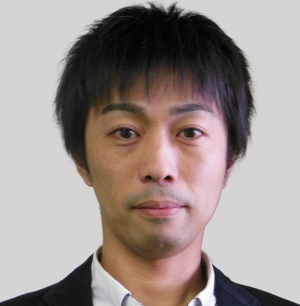 Research collaborator and former postdoc visiting researcher Takashi Nagai is selected as a new member of the Scientific Advisory Committee regarding environmental risk assessments. The committee consists of 21 scientists and conducts scientific considerations on official environmental risk assessments of industrial chemicals. It falls under the Japanse Chemical Substances Control Act which resembles the REACH regulation of the European Chemicals Agency (ECHA).
Research collaborator and former postdoc visiting researcher Takashi Nagai is selected as a new member of the Scientific Advisory Committee regarding environmental risk assessments. The committee consists of 21 scientists and conducts scientific considerations on official environmental risk assessments of industrial chemicals. It falls under the Japanse Chemical Substances Control Act which resembles the REACH regulation of the European Chemicals Agency (ECHA).
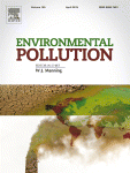 Microplastic pollution is increasingly being considered as a threat to the marine environment in general and to small marine invertebrates at the base of the food chain in particlular As microplastics occur both in the seawater and in the sediment, we investigated the potential for microplastic ingestion in two organisms inhabiting these environments: the blue mussel (Mytilus edulis) and the lugworm (Arenicola marina). As a follow-up to our previously published research, the microplastic load in field-collected organisms - i.e. exposed to ambient microplastic concentrations - was assessed. In all collected specimens, we detected low concentrations of microplastics in both species, although the sediment dwelling lugworms contained somewhat higher concentrations. Subsequently, potential impacts of microplastic uptake of these species were assessed. Although some responses were measured, we detected no significant adverse effects of microplastic ingestion.
Microplastic pollution is increasingly being considered as a threat to the marine environment in general and to small marine invertebrates at the base of the food chain in particlular As microplastics occur both in the seawater and in the sediment, we investigated the potential for microplastic ingestion in two organisms inhabiting these environments: the blue mussel (Mytilus edulis) and the lugworm (Arenicola marina). As a follow-up to our previously published research, the microplastic load in field-collected organisms - i.e. exposed to ambient microplastic concentrations - was assessed. In all collected specimens, we detected low concentrations of microplastics in both species, although the sediment dwelling lugworms contained somewhat higher concentrations. Subsequently, potential impacts of microplastic uptake of these species were assessed. Although some responses were measured, we detected no significant adverse effects of microplastic ingestion.
 Recently Eng. Gert Everaert successfully defended his PhD and received the title of Doctor of Applied Biological Sciences. His research dealt with the potential risk of organic micropollutants on marine phytoplankton in the greater North Sea: integration of modelling and experimental approaches. The full version of his thesis can be found at Ghent University Academic Bibliography (link). His promotors, Prof. dr. Colin Janssen and Prof. dr. ir. Peter Goethals (aquatic ecology), and the whole GhEnToxLab staff wish him the best in his further (academic) career. Congratulations Gert!
Recently Eng. Gert Everaert successfully defended his PhD and received the title of Doctor of Applied Biological Sciences. His research dealt with the potential risk of organic micropollutants on marine phytoplankton in the greater North Sea: integration of modelling and experimental approaches. The full version of his thesis can be found at Ghent University Academic Bibliography (link). His promotors, Prof. dr. Colin Janssen and Prof. dr. ir. Peter Goethals (aquatic ecology), and the whole GhEnToxLab staff wish him the best in his further (academic) career. Congratulations Gert!
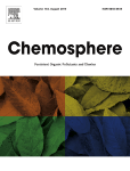 In a recent research paper published in Chemosphere, Gert Everaert and co-workers quantified the relative contribution of persistent organic pollutants to marine phytoplankton biomass dynamics. To do so, they used concentrations of persistent organic pollutants (POPs) to infer potential POP-induced effects on marine primary production in the Kattegat and the North Sea. They modelled phytoplankton dynamics using four classical drivers (light and nutrient availability, temperature and zooplankton grazing) and tested whether extending this model with a POP-induced phytoplankton growth limitation term improved predictions of the observed chlorophyll a concentrations.
In a recent research paper published in Chemosphere, Gert Everaert and co-workers quantified the relative contribution of persistent organic pollutants to marine phytoplankton biomass dynamics. To do so, they used concentrations of persistent organic pollutants (POPs) to infer potential POP-induced effects on marine primary production in the Kattegat and the North Sea. They modelled phytoplankton dynamics using four classical drivers (light and nutrient availability, temperature and zooplankton grazing) and tested whether extending this model with a POP-induced phytoplankton growth limitation term improved predictions of the observed chlorophyll a concentrations.
